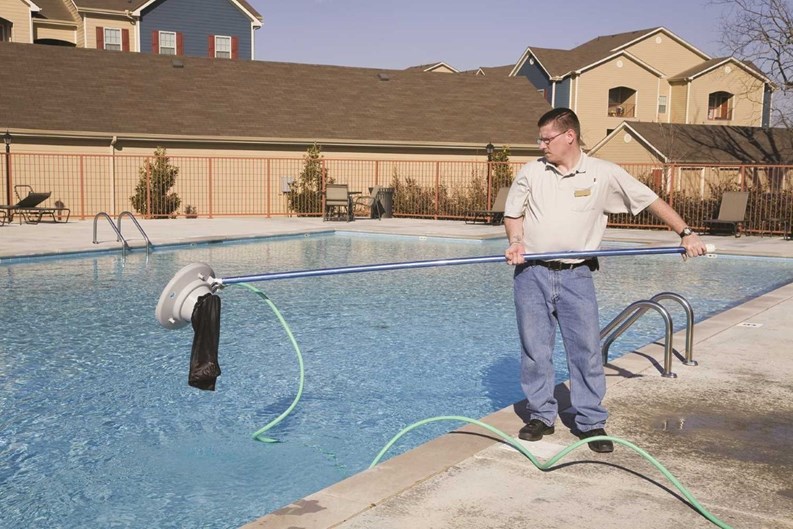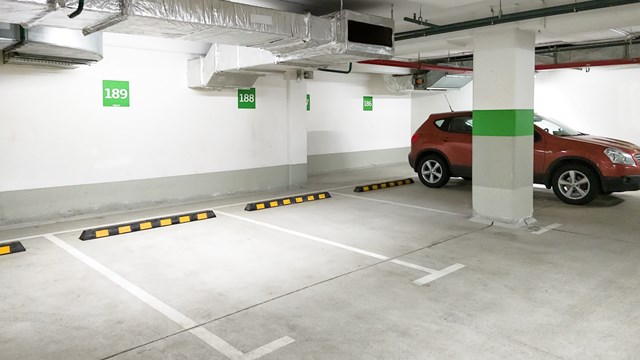Whether a building is a luxury high rise with an in-house movie theater, rooftop pool, and climate-controlled wine cellar or a much more modest low-rise or townhome community with a simple community room or gazebo, managing common amenities is just another function of co-op and condo administration.
Maintenance schedules, access control, hours of operation, and rules for use are all things that need to be taken into consideration and applied to amenities, regardless of the size of a community or its relative means. There are, however, general strategies for managing some of the more common amenities one finds in New York City and surrounding tri-state area co-ops and condos.
Size and Location
According to Todd Dumaresq, marketing manager for Toll Brothers City Living, a luxury condominium development firm that manages Pier House in Brooklyn Bridge Park and 400 Park Avenue South among other properties, people love outdoor spaces—but it can be a challenge to manage them in certain areas in New York City.
“When you are dealing with a limited amount of space, figuring out ways to create that outdoor space to please everyone can be challenging—but we certainly try, and I think we’re pretty successful,” says Dumaresq. “A lot of our buildings have rooftop terraces with open air fireplaces or barbeque areas. In one building, we have multiple outdoor spaces that include six different grilling stations, an outdoor TV, and semi-private lounge areas that actually get used in the winter time.”
“Amenities run the gamut,” says Carl Borenstein, president of Veritas Property Management in Manhattan. “There are buildings that have gyms and swimming pools. We have a number of smaller co-op and condo buildings that don’t have a laundry room, and we have larger buildings in the Bronx and Manhattan that have swimming pools, playgrounds and rooftop gardens.”
“Fitness rooms, indoor pools and multipurpose rooms are very popular amenities in New York City right now,” adds Edward Corless, vice president of the National Lifestyle Division of Eatontown, New Jersey-based FirstService Residential, a management firm with several properties in New York City in its portfolio. “Multipurpose rooms are open rooms that you can use for multiple functions. You could use it for a party, or a cocktail hour or a book club or a yoga or Pilates space.”
Profitable Amenities
Another amenity common in urban buildings is a coin or smart-card-operated laundry room. Experts say it’s both a convenience and a revenue source for buildings, which splits proceeds with the vendor who provides the machines and washing supplies.
Party rooms and rooftop decks have similar potential, if their rental generates income for the association. Where such facilities aren’t rented, users still may be required to put down a security deposit, which won’t be refunded if the condo’s maintenance staff must clean up afterward.
“I’ve seen buildings with pools who charge a membership fee,” says Borenstein. “They’ll also have cabanas, and they will allow people who are not residents to come to their pool by renting a cabana. These pools are seasonal, not year-round—but the money they make during the summer helps sustain the building for a large part of the year. Gyms in buildings also sometimes charge a membership for people who are not residents. I’ve also seen buildings that are not using their compactors, so on each floor they will remove them and use that space as storage that residents can pay a monthly fee to rent out.”
“Not everyone has a car in Manhattan—and it depends on the economics of the building—but a parking garage can definitely provide revenue potential for a building,” says Corless. “If you have a parking garage, what I would do is make sure my residents have first dibs on spaces. And then if we have extras spaces you can open it up to non-residents. But usually amenities are adequately-sized for the building.”
Maintenance Issues
Maintenance dollars allocated specifically to revenue-generating amenities also can provide a tax offset. For example, a natural-wood rooftop deck needs seal-coating and power-washing every year or two to prevent warping due to weathering and temperature changes. If enough warped boards need replacing, or if the entire deck must be removed, that may involve compliance with current building code requirements. Various challenges and issues may occasionally arise in the management, maintenance and administration of amenities.
“There are a number of challenges that arise in the management of amenities,” says Borenstein. “A pool, for example, requires extra payroll. It requires supplies, and you are required to have board of health inspections. You are required to deal with people—kids who are lifeguards. You have to make sure they are actually doing their job. There is also the aspect of upkeep of these amenities. If the item is a structure, it requires physical plant inspections and sometimes repairs and leaks. When I say leaks it’s not just the repair; sometimes water is lost, yet you are paying through your water bill. It’s not just an amenity—it’s a structural element that has to be maintained. I’ve heard of buildings with swimming pools that have collapsed because they weren’t maintained properly.”
“For outdoor spaces, you have to pick the right furniture,” says Dumaresq, “It has to be durable and pretty unaffected by the different weather conditions but we have staff in all of our buildings that help with the management and maintenance of those spaces and keep them up as part of the condo association.”
“Many property managers who run condominiums have never run an indoor pool, or have not had to manage a fitness facility,” adds Corless. “There are different codes and standards that go with that, and there are health and building codes. Also, you have the challenge of organizing people to use the amenities and creating the social networks that will allow community functions to occur. If you move into one of my buildings, there will be someone there asking you what types of things you like to do, whether it’s bike riding, running or going to the theater—and we will try to partner you up with like-minded people in the community.”
Where Responsibility Lies
According to experts, amenities management follows a convoluted chain of command. In the beginning. developers build projects and write the initial rules and regulations to administer the amenities. The owners and boards inherit whatever the developer built. After a community transitions to association control, its board adopts or revises the rules and regulations, and decides whether to add other amenities.
The board in turn delegates responsibility to the property manager and his or her staff to administer the amenities (and the reservations if required for their use), to keep them clean and safe, and to ensure that they are being used according to the rules and regulations.
In Arrears?
Rules and regulations regarding access to and use of various amenities vary from community to community, especially the barring of a resident from using an amenity if they’re in arrears.
“Laws vary from state to state in what you can do to collect but you can revoke privileges,” says Corless. “That could include the right to vote on community issues and the use of amenities. The management company usually would write a letter to the unit owner on the board’s behalf. It will say something along the lines of ‘you’re delinquent on your homeowner assessments and if its not paid within 30 days we will revoke your privileges.’ A parking garage may be slightly different. Some parking garages are linked up to your unit, so they are legally inseparable in that way. Other parking garages are set up where the resident doesn’t have a deeded parking space.”
“I think that happens more in condominium buildings than in co-ops,” says Borenstein. “I’ve actually haven’t had to go that route. I feel good knowing that about 95 percent of all the people that we run are current on their accounts.”
Trends in Amenities
In today’s recovering economy, the main focus in condos is controlling costs and maintaining amenities that residents actually use. “I’m seeing a lot more playrooms and playgrounds—maybe because more kids are popping up,” says Borenstein. “I’m also seeing storage becoming a popular item in terms of producing revenue for associations and I’m seeing residents who are willing to paying extra for bike storage.”
According to Corless, “Amenities are becoming more flexible. Most management companies are looking more at ways of improving people’s lives. We are asking questions like ‘What are the things we can do to help your life? For example, would it be helpful if we picked up your dry cleaning and put it in a room in the building for you so you don’t have to worry about the store closing, and it will be there for you when you get home. We are trying to look at the way you live and try to make your life less hectic. That can be done through amenities and by services.”
George Leposky is a freelance writer and a frequent contributor to The Cooperator.







Comments
Leave a Comment